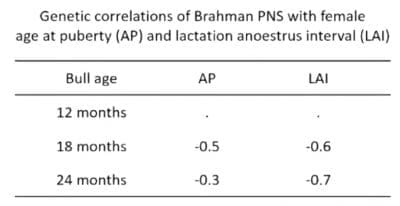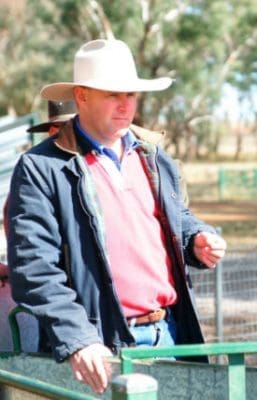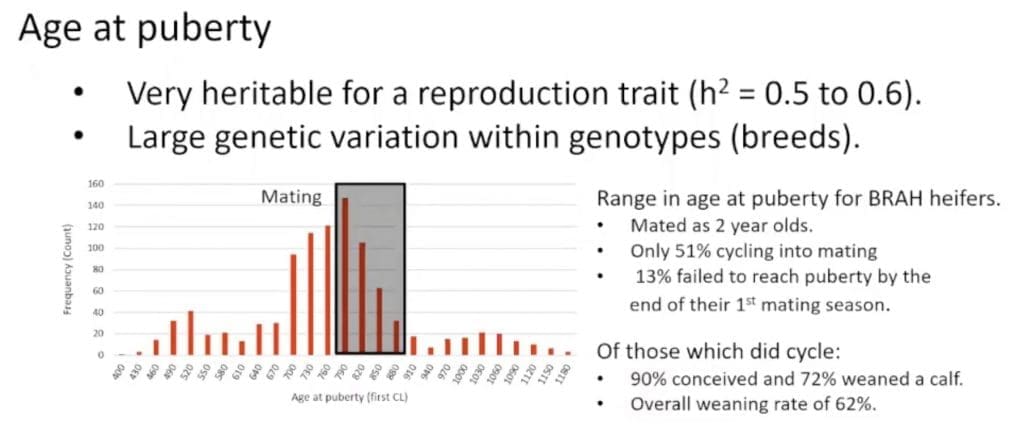IMPROVING reproductive rates, particularly in northern herds, is generally considered to be one of the most important areas of focus in the quest to generate increased profits for beef enterprises.
Reproductive rates are influenced by a range of environmental and physical constraints. However, the opportunity to bring genetic selection to the forefront does offer producers the opportunity to make significant and permanent improvements within the cow herd.
The CRC for Beef Genetic Technologies* which concluded in 2012, had reproduction as a key outcome. The data collected across ten beef herds in northern Australia, representing six Brahman herds and more than 1030 Brahman females, and 1130 tropical composite cattle provides some key insights to selection traits and opportunities for producers.

Matt Wolcott
Dr Matt Wolcott from the Animal Genetic Breeding Unit (AGBU) in Armidale outlined some of the key outcomes associated with CRC research at the recent Beef Improvement Foundation Research Symposium held online to an international audience. As part of the CRC findings, Dr Wolcott identified two key areas of research in females that contribute directly to the overall reproductive rate of herds.
Age of Puberty
The first trait is that of Age at Puberty (AP). This is considered to be the age of a heifer, measured in days following her weaning where an ultrasound scan detects the Corpus Luteumn (first cycle).
The CRC research involved mating heifers at two years of age for a three-month period. Dr Wolcott highlighted results of this program where the range of Age of Puberty was significant in the northern herds.
In practical terms, he said only 51pc of heifers joined at two years of age were cycling into mating. More significantly, only 13pc of those heifers had actually reached puberty by the end of the first mating season.
However, on the positive side, among the heifers that did conceive, a large portion went on to successfully wean a calf, which helped improve the overall weaning rate to 62pc.
While AP is a significant contributor to reproductive rate, the ongoing challenge for herds is managing females to ensure early returns to service, and ensuring females successfully rejoin each year.
Within the CRC program, the period of time, known as the Lactation Anestrus Interval (LAI), was calculated for second-calf females. The research measured the period of time from when the bull was moved in with the cows to the first scan showing a Corpeus Luteum.
Again, the level of variation observed was significant. The CRC developed a LAI EBV for the research. This showed a difference of more than 200 days from best-performing sire to worst performing sire.
In effect, as Dr Wolcott pointed out to the symposium, this was a three-month difference, dramatically impacting on successful rejoining in controlled programs.
At a practical level, measuring these traits was described by Dr Wolcott as ‘expertise-intensive’.
In practical terms, this makes measuring and observing these traits more difficult to achieve. The value of the research data lies in its contribution to the accuracy of the Days to Calving (DTC) EBV.
Within ongoing research programs associated with cooperating herds in northern Australia, and other data sources, Age at Puberty and Lactation Anestrus Interval are proving highly valuable to improved accuracy.

Source: Dr Matt Wolcott “Novel reproduction rates for genetic evaluation: BIF Research Symposium”
The role of sires in improving ongoing herd reproduction has also been a significant area of research. Dr Wolcott identified the opportunity for producers to use male traits to also drive reproductive performance in females. A key trait as reported in both Brahman and Santa Gertrudis EBVs is Percent of Normal Sperm (PNS). While this is a key trait in ensuring successful conceptions, PNS also has a correlation with Age at Puberty in females.
This moderately favourable correlation offers producers another opportunity to exploit genetics to increase reproductive rates. Selection of sires with above breed average EBVs for PNS will have an added impact on improving conception and heifer age at puberty.
Ahead of this year’s spring bull sales, these results are worth including as part of a selection check-list, particularly if improved reproductive rates is a key issue for enterprises. Sires with high accuracy for favorable Days to Calving, as well as for higher percentages of PNS are definitely worth closer scrutiny and appraisal for breeding herds.
* The CRC for Beef Genetic Technologies was a collaborative effort between 21 partner institutions from Australia, the US, Canada, New Zealand, Korea, Brazil, Ireland, France and South Africa. The seven-year program commenced in 2005 and focussed on development of new genetic and genomic technologies to address beef industry priority issues to improve profitability, productivity, animal welfare and responsible resource use of Australian beef businesses. Shaping much of Australia’s ground-breaking meat and livestock research, the Beef CRC operated for three successive seven-year terms from 1993 to June 2012.

Alastair Rayner
Alastair Rayner is the Principal of RaynerAg, an agricultural advisory service based in NSW. He regularly attends bull sales to support client purchases and undertakes pre-sale selections and classifications. He can be contacted here or through his website www.raynerag.com.au

